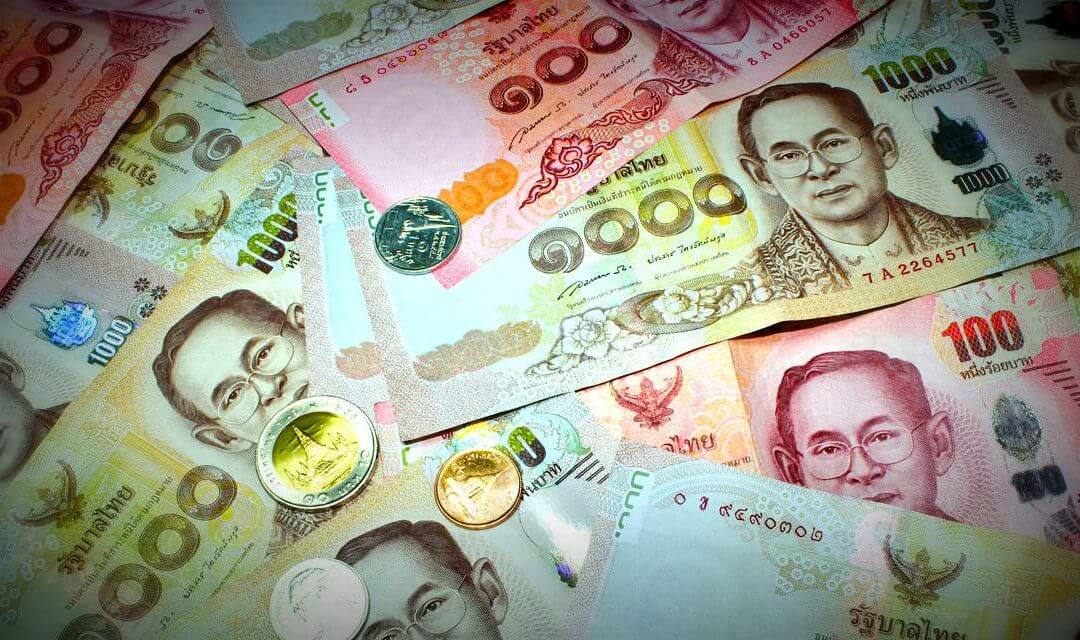Thailand Currency

Thailand Currency History.
The current Thailand currency is called the Baht, which is divided into smaller denominations called Satung. There are 100 Satung in every Baht with a collection of different valued coins. The denomination start with the smallest coins being one, five, ten and fifty Satung coins, then there are one Baht coins, two & five Baht coins.
Thai currency has a number of common notes, these change figure head with the current king of Thailand. They currently have Rama X on them & you will find ten, twenty, fifty baht notes before getting one hundred, one thousand and ten thousand baht notes. These coins and notes are in common circulation with the exception of the one hundred thousand which isn’t that common.
The colors of the notes differ from green, blue red and gold but in recent times then 500 & 1000 Thb are very close in color. Please be extra careful when receiving change and ensure that you get the correct note. The coloration is a lot closer than this graphic below shows. Originally the 500 was a lot darker purple originally but recently they are quite similar.
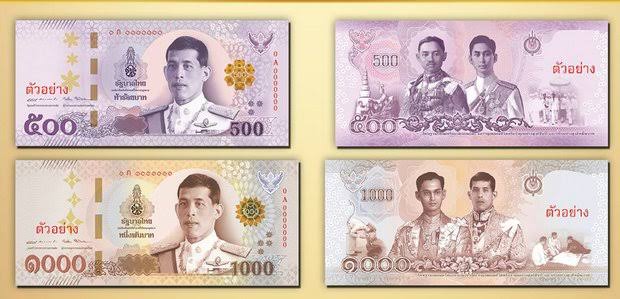
Common Prices in 7/11.
To given you an idea of value when at 7/11 looking for a snack. A loaf of bread is 35 baht, a two liter bottle of milk is around 95 baht with a standard coffee is around 40 Thai baht. You can buy a 1.25 liter of Coke for about 25 baht and in the top shelf a bottle of Johnny Walker Red scotch is around 600 Thb for 750 mil. Packets of crisps are around the 20 to 40 baht depending on size. Grab some headache paracetamol in a packet of 15 tablets for 12 baht. Bottles of water re pretty cheap with large bottles about 15 baht so keep up your water intake when traveling.
Thailand Currency History.
The Thailand currency has been in metal coin for hundreds of years. The first machine made standardized coins were created in Thailand itself when in the 1880s a coin machine from Queen Elizabeth (1st) was given to the Thai King Rama V as a gift. King Rama V is said to have visited England and other European countries to look at technologies at the time.

Some time later another machine was acquired and the Baht became the Thailand currency we know and use today. The values of notes has changed in denomination over the years but remain constant with the use of Satung as their base denomination.
How Old is Thailand Currency?

Thailand is a surprisingly old country being called Siam for many years with its creation around 200-300 BC. Yes, there was trade going on in the area all that time ago. There have been Roman coins found dated back to 270 BC so it has a longer history than even I understood. The region had different borders and not strict countries as we know today but in time they would form nations.
The general trading and currency in the earliest days was bracelets and stones initially which changed to hand made oval shaped metal coin. There would be a number of variations over the coming years.
Seventh Century Thailand Currency.
In around 100 AD the first coins from Vietnam were being used, these were called Funan coins. These were used throughout Indochina, these had consistent value and popular with traders making consistency in value possible. These were used for some time in the region and remained popular for several hundred years. Having confidence in the currency helped by providing security and confidence in the currency for all traders in the region.
This continued to the seventh century (7th) where a new currency became accepted called Dvaravati coins. The Dvaravati coins remained in use from the 7th century until the 11th century. It shows the acceptance and power of having widely accepted currency throughout a region remembering these were available through many countries.
Eighth to Eleventh Century.
There were a number of other coins used from nearby kingdoms such as the Sandal wood flower coins or Dok Jan, which were also used from the 8th to the 13th century. A separate currency of baked clay coins were also in use about this time up till King Rama V came to power. These coins were called Cowrie shells and baked clay coins.
King Rama V
King RAMA V is seen as the king who modernized Thailand. He is credited with bringing technology as well as ideas from the west into Thailand. If you ever saw the King & I movie, this was about Rama V. The movie is disliked and banned in Thailand because the portrait of Rama V is seen poorly here.
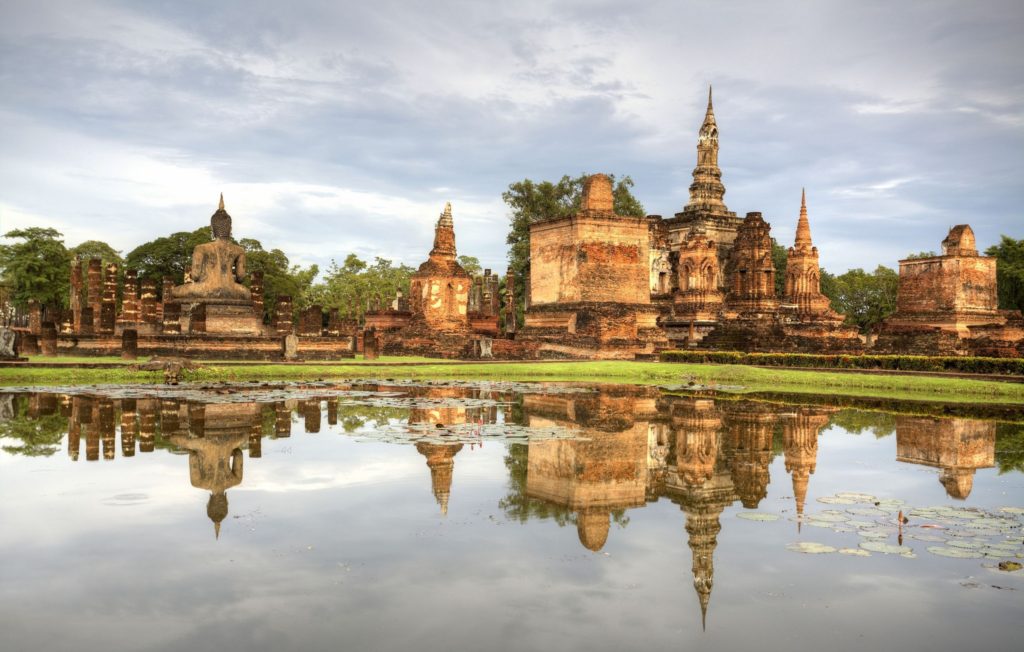
Lana Period & Beyond.
The Lana period in Thailand was an exciting time with the country we know today has its roots. King Rama V was instrumental in creating the Norther Kingdom under his rule that would become Siam and more recently Thailand. King Mangrai was a smooth operator using both brute force and patience to take territory from neighboring kings. With his armies to take a number of kingdoms in the beginning but not all were possible to take by military means.
It took patience and planning to conquer one that was to strong and well fortified. What he did was make a pact with a shrewd man assistant who he assisted by gaining power and status inside the Kingdom. He grew in stature till he was able to discredit the King and have him overthrown. King Miang Rai then walked in and took over the last of his initially required conquests completing the Lana nation.
Thailand Currency – Today’s Baht.
The Thailand currency has remained strong within Asia, alongside the Malaysian Ringgit and Singapore dollar being the most valuable currency regionally it holds its own. There are certainly less developed countries such as Laos which uses the Kip whos currency is f a much lower value. The Kips value is much lower than the Thai baht with an exchange rate of 426 Kip to one Baht.
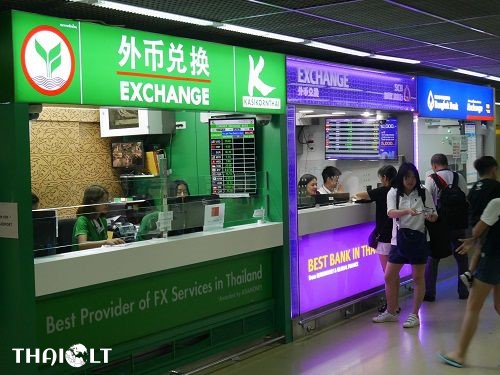
Against the Australian dollar, the Thai Baht has fluctuated from 18 baht low to the Australian dollar up to 32 Thb per dollar. A generally accepted point is when the currency sits normally is about 25 to 27 Baht to the Aud. This gives really good value for money on a holiday in Thailand. You can get a 4 star hotel or a serviced apartment for the price of a normal motel in Australia at $130. Other foreign currencies such as the USD normally sit around 32 Baht to the Thai baht with the Euro and UK pound bobbing around the 40 baht level.
Shopping & Value.
Thailand prices are pretty good generally for market level cloths. Looking for well known brands the prices are closer to western prices for high street goods and shops. Items like Lee jeans or Lacrosse shirts are cheaper than home but expensive compared to other clothes available in markets.
Many items like sport shoes are manufactured in Thailand so prices are extravagant for Thai people with a pair of shoes at 2000 THB which is a weeks wages for many farmers and laborers. Accommodation is also pretty cheap with 4/5 star hotels for just over 100USD per night like the Novotel Bangkok. if your traveling further afield you can find quaint homesteads and resorts dotted around Thailand for a pittance per night.
Money Exchange.
If your a seasoned traveler you will know some of these tips but if your new getting Thailand currency can worry some people. It’s not wise to change lots of money at either the international airport you arrive at or in hotels generally. They mostly offer very poor exchange rates but you may be happy to change a hundred dollars so you have a little cash in hand.
The roadside exchange booths in tourist are competitive but you need check a few so take a walk and see if rates vary. You will need ID to exchange money so take your passport with you. If you can just walk into a bank in the street or shopping centers and exchange your money. DO NOT fall for people wanting to exchange money with you in the street. Keep to known reliable money exchangers.
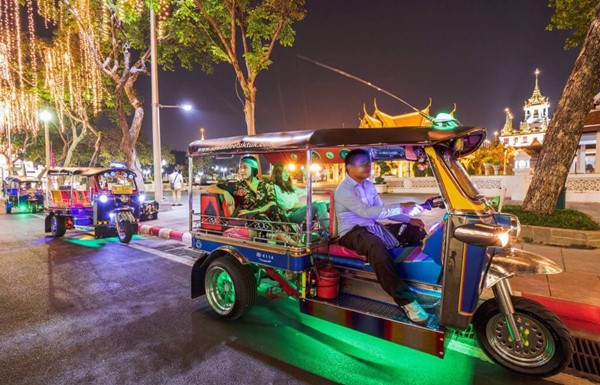
Taxi & Travel
No matter where you go Taxi drivers seem to have a poor reputation so its important to be careful. When booking your accommodation in Bangkok for your arrival its highly recommended you organise a pickup with the hotel. They will send a van or a dedicated taxi with your name and the hotel name also on a sign. It saves a lot of possible issues getting to your hotel if you have never been there and don’t know how far it is.
If you don’t have a taxi booked don’t get dragged outside by some random taxi driver inside the airport. These taxi drivers are normally unlicensed and more likely to be a issue of something goes wrong. Grab your bags and go to the registered taxi stand or the Chauffeur service if you wish.
The trip takes into account a few different charges you are responsible for so also be aware. You can take the freeway which is fast but you have to pay for the tollways as well. The taxi driver will give you a price or offer to use the meter in the taxi but on top of this will be the freeway charges!
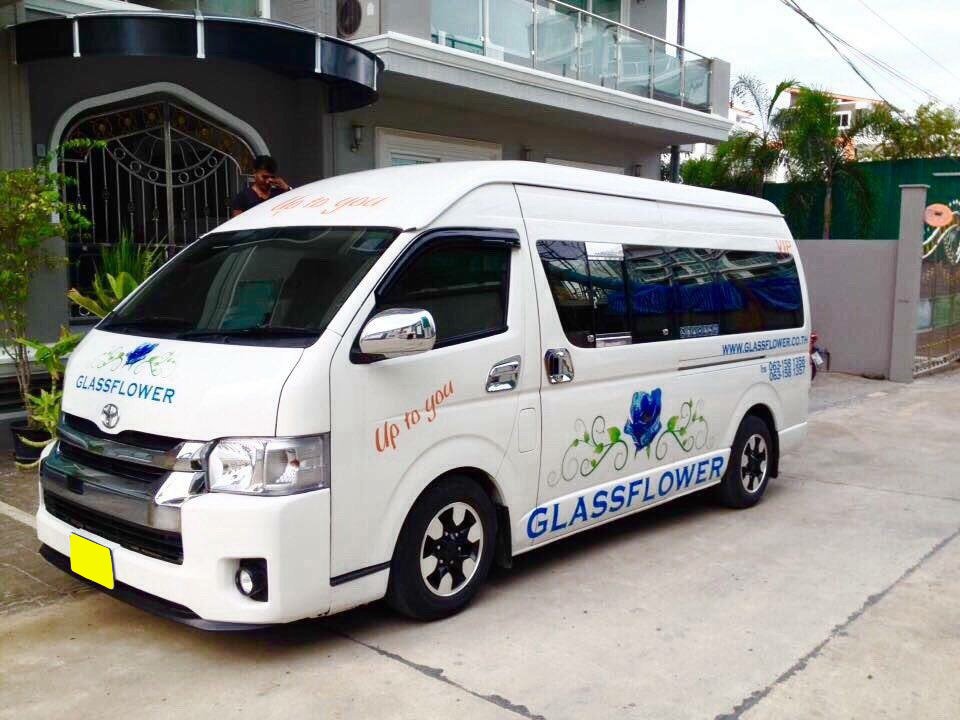
If your doing some sight seeing there are often vans driven by private taxi firms organized through the hotel. They may be a little more expensive than the horde of taxi drivers circling out front of the hotel but they will be reputable! I would highly recommend organizing a fixed price tour through the hotel to see the sights. Its really not that expensive.
Considering a Tuk Tuk ride anywhere then please ask the staff at the hotel what the cost is to get to your destination. Ensure you agree on the price before you climb aboard the Tuk Tuk. In some cases they may have prices and destinations available to offer you. Consider the Van option as its cooler in summer and safer than a Tuk Tuk which is quite exposed in traffic.
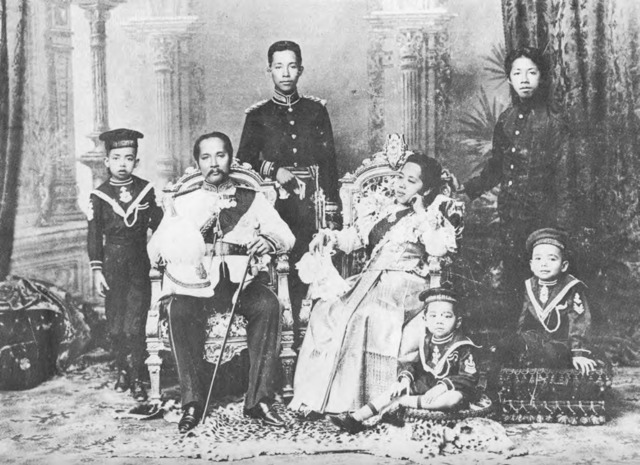
Tipping Culture.
Please remember tipping in Thailand makes the world go around. Tipping your baggage handler a couple dollars US will make their day. 100 Thb is a good tip which is setting you up to get looked after even better than normal. Look after staff in your hotel and they will bring extra big smiles when you ask for something. Dropping a tip after dinner brings smiles and costs very little.
There are many countries around the world that tipping is not common. My Australia is one along with the UK that don’t tip normally in their own countries. I think there is less reluctance now but some don’t think tipping is necessary as all taxes and staff are catered the bill. If tipping is a strange concept work on 10% of the cost of the service as a guide or how effort was put into the task.
Author.
Brendon McAliece, (Aka Gunnie) is a military veteran with 23 years working on Jet Fighters, their weapons systems and ejection seat/module systems as well as munitions and R&D. Involved with flight simulation since the 1980s he has flown all the major flight simulators over the years.
He is an Australian expat who has lived in Malaysia, UK, Saudi Arabia and more recently Thailand. He is a multi lingual blogger who loves to share his life experiences here on www.LetsFlyVFR.com and www.DreamingGuitar.com, his lifestyle and Travel experiences Blog.
